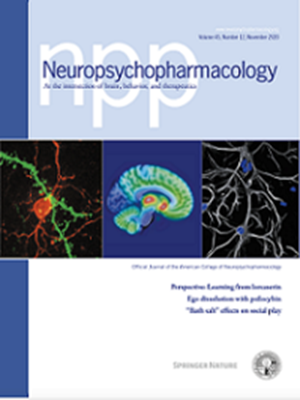Multivariate patterns among multimodal neuroimaging and clinical, cognitive, and daily functioning characteristics in bipolar disorder
IF 6.6
1区 医学
Q1 NEUROSCIENCES
引用次数: 0
Abstract
Individuals with bipolar disorder (BD) show heterogeneity in clinical, cognitive, and daily functioning characteristics, which challenges accurate diagnostics and optimal treatment. A key goal is to identify brain-based biomarkers that inform patient stratification and serve as treatment targets. The objective of the present study was to apply a data-driven, multivariate approach to quantify the relationship between multimodal imaging features and behavioral phenotypes in BD. We pooled structural, task and resting-state functional magnetic resonance imaging (MRI), and clinical, cognitive, and functioning data from 167 fully or partly remitted patients with BD from three studies conducted at the same site. We performed canonical correlation analysis (CCA) to investigate multivariate relations among the 56 imaging and 23 behavioral features in patients. Data from 46 matched healthy controls were included for covariate-adjusted standardization of patients’ scores and for group comparisons. The imaging and behavioral data sets showed a strong canonical correlation (r = 0.84, p = .004). Among the behavioral variables, cognitive test scores across psychomotor speed, verbal memory, and verbal fluency were associated with the multimodal imaging variate comprising task activation within the dorsolateral prefrontal cortex and supramarginal gyrus, also when other clinical and daily functioning variables were considered. Task activation within the dorsal prefrontal and parietal cognitive control areas constitutes a potential pro-cognitive treatment target.

双相情感障碍的多模态神经影像学、临床、认知和日常功能特征的多变量模式。
双相情感障碍(BD)患者在临床、认知和日常功能特征上表现出异质性,这给准确诊断和最佳治疗带来了挑战。关键目标是确定基于大脑的生物标志物,为患者分层提供信息并作为治疗靶点。本研究的目的是应用数据驱动的多变量方法来量化双相障碍多模态成像特征与行为表型之间的关系。我们汇集了来自同一部位167名完全或部分缓解的双相障碍患者的结构、任务和静息状态功能磁共振成像(MRI)以及临床、认知和功能数据。我们采用典型相关分析(CCA)探讨患者56个影像学特征和23个行为特征之间的多变量关系。来自46名匹配健康对照者的数据被纳入患者评分的协变量调整标准化和组间比较。影像学和行为学数据集表现出很强的典型相关性(r = 0.84, p = 0.004)。在行为变量中,精神运动速度、言语记忆和言语流畅性的认知测试分数与多模态成像变量相关,多模态成像变量包括背外侧前额叶皮层和边缘上回内的任务激活,其他临床和日常功能变量也被考虑在内。前额叶背侧和顶叶认知控制区的任务激活构成了潜在的促认知治疗目标。
本文章由计算机程序翻译,如有差异,请以英文原文为准。
求助全文
约1分钟内获得全文
求助全文
来源期刊

Neuropsychopharmacology
医学-精神病学
CiteScore
15.00
自引率
2.60%
发文量
240
审稿时长
2 months
期刊介绍:
Neuropsychopharmacology is a reputable international scientific journal that serves as the official publication of the American College of Neuropsychopharmacology (ACNP). The journal's primary focus is on research that enhances our knowledge of the brain and behavior, with a particular emphasis on the molecular, cellular, physiological, and psychological aspects of substances that affect the central nervous system (CNS). It also aims to identify new molecular targets for the development of future drugs.
The journal prioritizes original research reports, but it also welcomes mini-reviews and perspectives, which are often solicited by the editorial office. These types of articles provide valuable insights and syntheses of current research trends and future directions in the field of neuroscience and pharmacology.
 求助内容:
求助内容: 应助结果提醒方式:
应助结果提醒方式:


